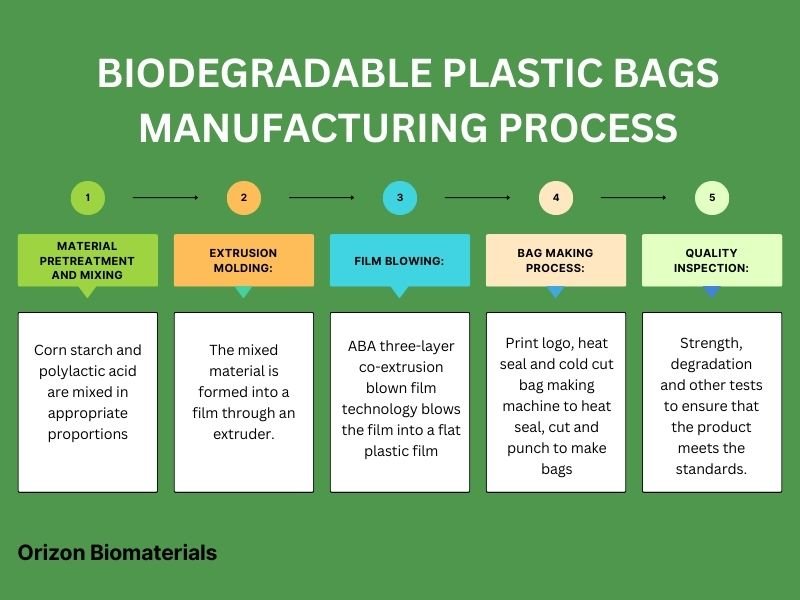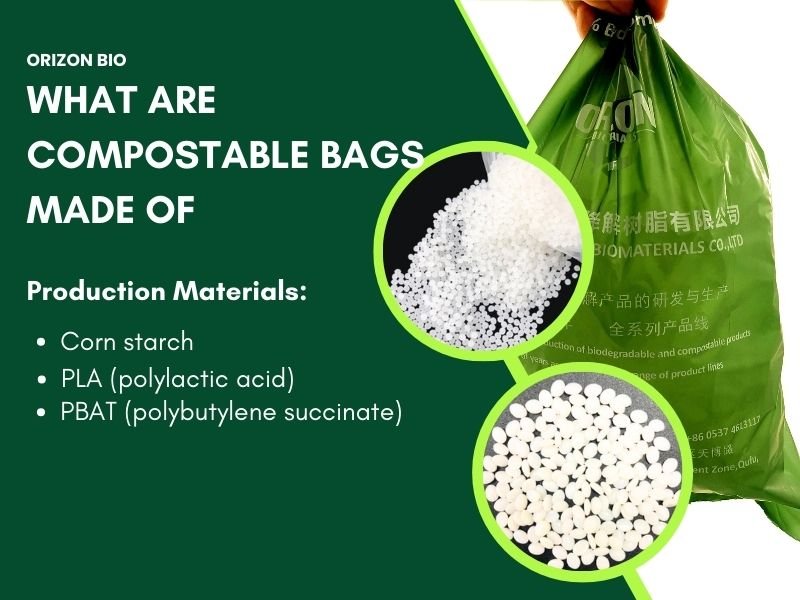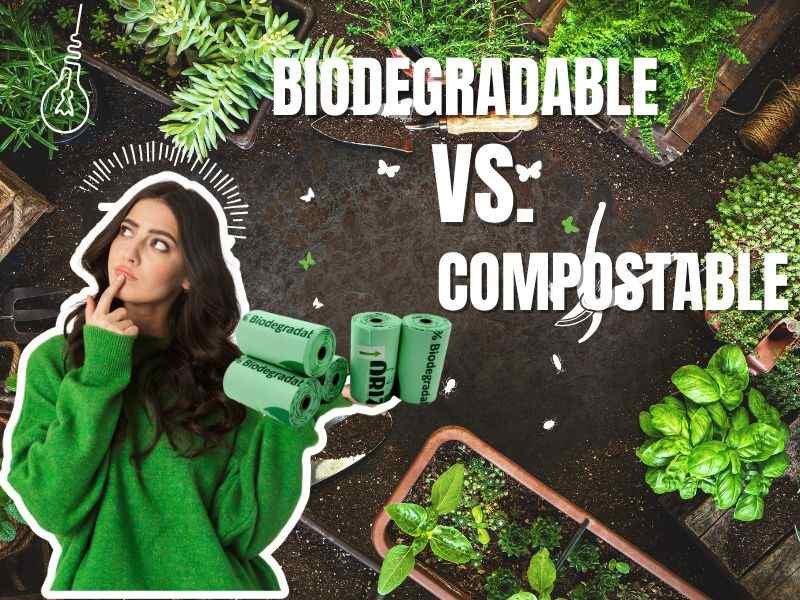When searching for eco-friendly packaging, have you ever come across the term “Oxo degradable”? Does it biodegrade when exposed to light? It sounds so high-tech and advanced. But as a manufacturer of compostable bags with 16 years of experience, I can honestly tell you that it’s probably quite the opposite of what you might think. Globally, more and more countries are banning their use by law.
Today, we’ll explain what Oxo-degradable packaging is, the difference between Oxo-degradable and biodegradable packaging, its environmental impact, why the EU banned it, and how to distinguish between photodegradable products. After reading this, you’ll become a semi-expert in this field, easily identifying the pitfalls of “pseudo-environmental” claims and making the most professional and safest choices for your business.
OXO Degradable Vs Biodegradable
Biodegradable: Microorganisms break down polymer materials into harmless small molecules such as water and carbon dioxide. There are no environmental or time constraints.
Oxo-degradable: This is essentially PE plastic (polyethylene) that has 1%-3% of photosensitizers or oxidizers added during production. These accelerate the plastic’s aging process under the influence of light and oxygen, causing the polymer chains to break under the influence of light or oxygen, resulting in smaller fragments. These fragments are difficult to degrade and can contribute to microplastic pollution.
Compostable: Materials must be composted in industrial composting facilities under specific conditions of temperature, humidity, and oxygen to decompose into water, carbon dioxide, and microorganisms. Composted products are harmless to soil and biodegrade within 180 days. Compostable bags are a popular product on the market.
Biodegradation is a chemical change, which is true decomposition; photo-oxidative degradation is a physical change, which is disguised fragmentation.
Oxo Degradable vs Biodegradable/Compostable
| Feature | Oxo-degradable Plastics | Biodegradable / Compostable Plastics |
| Process | Plastic Bag + Light/Heat → Countless Microplastic Particles | Bag + Microorganisms → Water + CO₂ + Biomass |
| Essence | Physical Fragmentation | Chemical Decomposition |
| Outcome | Pollution persists, only becoming invisible. | Matter returns to the natural cycle. |
The Dangers of Microplastics
Photo-oxidative degradation ultimately results in countless microplastics. These particles are so far removed from our daily lives and out of our reach that they pose little threat to us. Have you ever considered this?
This is precisely the most insidious and harmful aspect of photo-oxidative degradation. Billions of invisible microplastics exist all around us, posing the following dangers:
- Becoming a “Toxin Sponge”
The surface of microplastics has a strong adsorption capacity. As they float in the ocean, they firmly absorb toxic pollutants already present in the water (such as polychlorinated biphenyls (PCBs) and pesticide residues (DDT). A single tiny piece of microplastic can contain millions of times more toxins than the surrounding water!
- Entering the food chain
Being consumed by plankton in the ocean.
- Accumulation of Toxins
The ocean’s food chain absorbs toxins layer by layer, continuously accumulating and concentrating them.
- Back to You and Me
When we eat seafood, toxin-carrying microplastics, originally formed from the fragmentation of photo-oxidatively degradable plastic bags, may have already quietly entered our bodies.
Global Ban on Oxo-degradable
Because of its significant harm and misleading nature, more and more countries and regions around the world have upgraded their regulations from “not recommended” to “explicitly banned.”
The European Union (EU) – The Strongest Opponent
As early as 2019, the EU adopted the Single-Use Plastics Directive (Directive (EU) 2019/904), which explicitly prohibits all member states from placing oxo-degradable plastic products on the market.
Why? Let’s look at the official statement from the European Commission, which speaks louder than anyone else’s:
“Oxo-degradable plastics cannot be considered biodegradable. They do not contribute to solving the plastic pollution problem and are a cause for concern because they fragment into microplastics. They have no proven benefits for the environment, and there is no guarantee that they will completely decompose within any given timeframe, as is the case with compostable plastics.”
Beyond the EU, many other countries and regions have also taken action.
The entire 27 EU countries, the UK, Spain, France, Italy (partially), the UAE, Australia (partially), New Zealand (planning)…
(Not recommended by the industry/controversial), the US (warning label requirements in several states), Canada, etc.
How does this impact your business?
- Export Risk: If you’re exporting products to regions like the EU and using photodegradable packaging, your goods may not be able to clear customs and may be seized or returned, resulting in significant financial losses.
- Legal Risk: Selling these products in countries and regions with existing legislation could result in hefty fines.
- Supply Chain Risk: As bans continue to expand, the supply chain for photodegradable plastics could be disrupted at any time. It’s unwise to base your business on such a shaky product.
How to Identify Genuine and Fake Eco-Friendly Bags
As a purchaser, facing so many different bags, how should we choose truly environmentally friendly bags? I believe you must also be a headache. Now I will give you three simple methods.
1.Certification Marks
True eco-friendly products are certified by a third-party authority.
| Proof of True Compostability | Vague Marketing Terms to Be Wary Of |
| BPI Certified (USA) | “Oxo-biodegradable” |
| TÜV AUSTRIA (OK compost) (EU) | “Environmentally-friendly” |
| DIN CERTCO (EU) | “Green” |
| EN 13432 (EU Standard) | “Eco-friendly” |
Remember: Always question products that use vague environmental terms without backing them up with official, third-party certification logos.
2.Material Composition
If it says something like: PE (polyethylene), PP (polypropylene) + Additives / d2w / TDPA, it’s 100% photo-degradable plastic and should be discarded immediately.
If it says: PLA (polylactic acid), PBAT, starch blends, etc., it’s a truly biodegradable/compostable material.
3.Consult the Supplier
“Please provide the BPI (You can find our company identification number on the BPI official website: 10529118. )or EN 13432 certification and number for this product.” These certification numbers can be found on the official website.
Congratulations! You’ve found a reliable partner.
Why Do People Still Buy Oxo Degradable Bags?
The answer is simple and brutal: because it’s cheap.
Photodegradable plastics are composed of 97%-99% of common, inexpensive PE plastic, with the cost of additives being almost negligible. Their production costs are comparable to those of traditional plastic bags.
True biodegradable/compostable materials (such as PLA and PBAT) are made from raw materials through complex processes like fermentation, so their costs are naturally higher.
How to Choose: OXO Degradable Vs Biodegradable
| Type of Risk | Description |
| Environmental Risk | Becoming a direct source of microplastic pollution. |
| Brand Risk | Being labeled as “greenwashing” and losing consumer trust. |
| Legal Risk | Facing bans and fines in an increasing number of global markets. |
| Aspect of Value | Description |
| Brand Protection | Safeguarding your brand’s reputation and integrity. |
| Consumer Commitment | Demonstrating a genuine commitment to your customers and sustainability. |
| Regulatory Compliance | Ensuring compliance with global regulations and avoiding legal penalties. |
| Environmental Responsibility | Fulfilling a tangible responsibility to our shared environment. |
Conclusion
“OXO degradable vs biodegradable” is never a “choose one or the other” decision. Photodegradable is a transitional technology that has been proven by science and mainstream global regulations to be “harmful” and is being phased out.
For any brand that aspires to long-term success and is responsible to its customers and the environment, the only professional choice is to completely abandon the concept of photodegradable and embrace certified, 100% biodegradable or compostable products.
FAQ
Related Artical:What are Biodegradable Plastic Bags ?2025 Comprehensive Guide



